Meet the Students
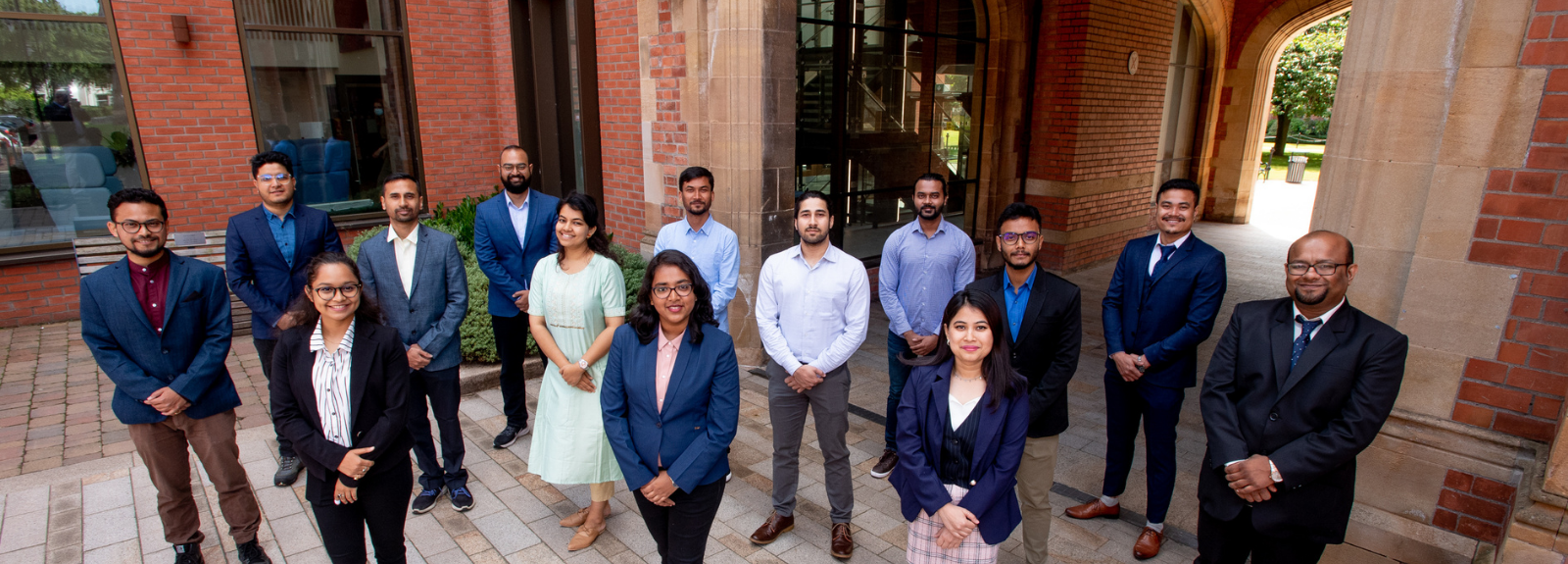

Nationality: Indian
Project Title: Integrated Dynamic Analysis of Offshore Solar System
School: Natural and Built Environment
QUB Supervisor: Dr Madjid Karimirad & Dr Pauline MacKinnon
Tezpur Supervisor: Dr Nabin Sarmah
As part of my research progress so far, I am pleased to inform you that I have successfully submitted my draft manuscript for the upcoming OMAE-22 conference scheduled to be held from 5th - 10th of June in Hamburg, Germany this year. I am confident that the final manuscript will be accepted and I will be able to attend the conference. I have also planned to prepare for another conference(RENEW-22) scheduled for November 2022 in Lisbon, Portugal.
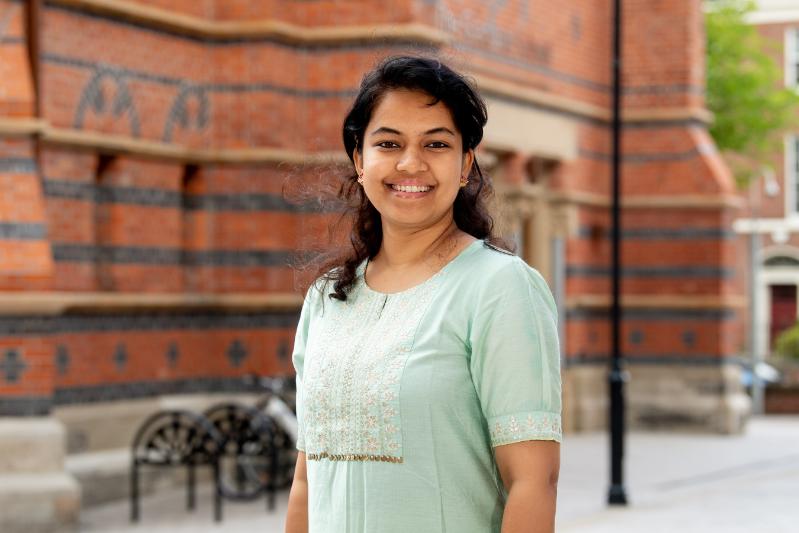
Nationality: Indian
Project Title: Intergenerational Communication for Social Change in Sectarian Societies
School: Social Sciences, Education and Social Work
QUB Supervisor: Dr Gemma Carney
Tezpur Supervisor: Dr Nirmali Goswami
- Presented a paper titled ‘Social media: The site for methodological inquiry in social science research’ in the ‘IAFOR Barcelona conference on Arts media and culture 2021’ (8-10 December, 2021) held online from the University of Barcelona, Spain. The paper has been further included in the repository of conference proceedings.
- Submitted an abstract for the 51st Annual conference of the British Society of Gerontology 2022, to be hosted online by the University of the West of England, Bristol.
- Participated in a UTV (television channel in Northern Ireland) programme as part of its celebration of the South Asian Heritage Month in July-August 2021. I briefly highlighted my experiences of being an international student at Queen’s University, Belfast, sponsored by the Government of India.
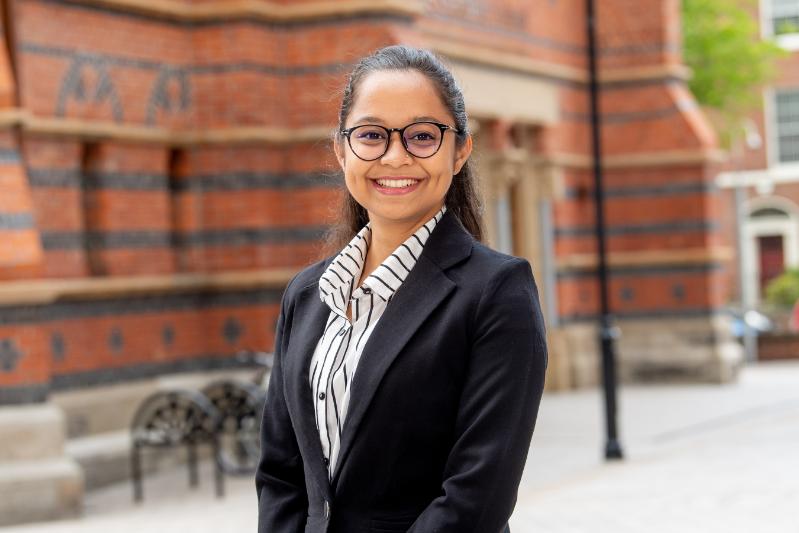
Nationality: Indian
Title of Project: Design of LCST Ionic liquids incorporating functionalized phenyl tetrazolates to be used as draw solutes for forward osmosis
School: Chemistry and Chemical Engineering
QUB Supervisor: Professor John Holbrey & Dr Leila Moura
Tezpur Supervisor: Professor Ruli Borah
- Participated in a poster presentation at the 6th International Conference on Ionic liquid based Materials (ILMAT-6) held in Strasbourg, France from 22nd to 29th November 2021.
- Participated in a poster and oral presentation at the QUILL-IAB meeting held in March 2022 at Queen's University Belfast.
- Participated in a poster presentation at the 28th EUCHEMSIL Conference on Molten Satls and Ionic liquids (EUCHEMSIL2022) held in Patras, Greece from 5th to 10th June 2022.
- Received aRSC (Royal Society of Chemistry) travel grant award for attending the EUCHEMSIL2022.
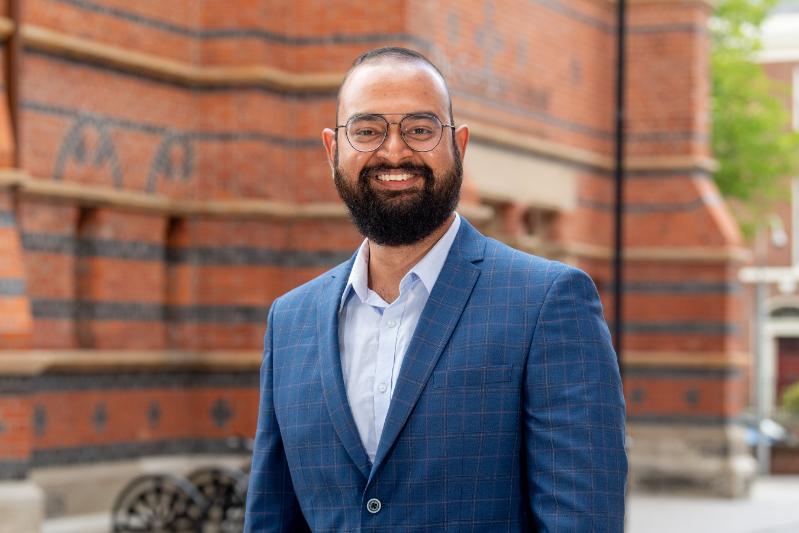
Nationality: Indian
Project Title: An Integrated Biorefinery Approach for Unlocking the Potential of Lignocellulosic Biomass to Value Added Chemicals and Fuel
School: Chemistry and Chemical Engineering
QUB Supervisor: Dr Haresh Manyar & Professor Alexandre Goguet
Tezpur Supervisor: Professor Dhanapati Deka
- Presented a poster from my initial work at UK-China Newton Researchers Link Workshop on Catalytic Chemistry and Chemical Technology in C1 Process which was held at Queen’s University Belfast on Nov 27-28, 2021.
- Delivered an oral talk titled, ‘Insights into Selective Hydrogenation of Levulinic Acid using Copper on Manganese Oxide Octahedral Molecular Sieves in Water’ at the 8th UK Catalysis Conference (UKCC) 2022 on Jan 5-7, 2022 organised at Holywell Park, Loughborough, UK.
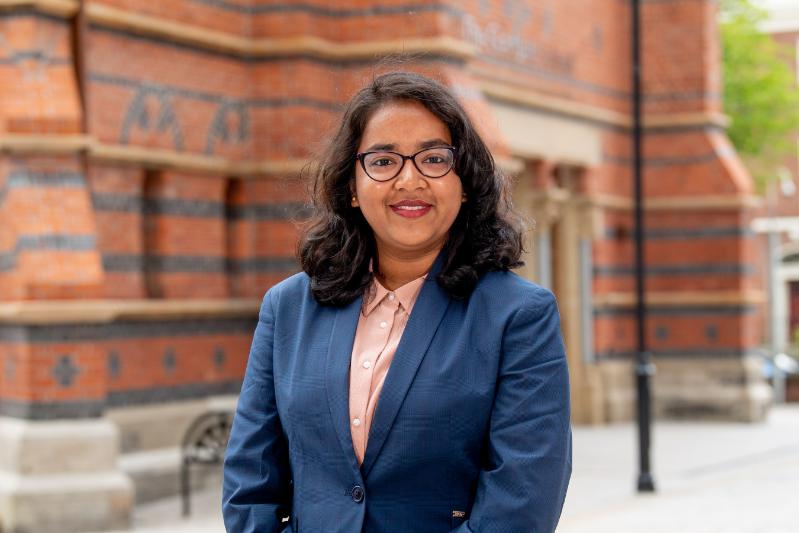
Nationality: Indian
Project Title: Machine Learning for Pattern detection in Medical Health Records of Patients with Obstructive Sleep Apnea Syndrome.
School:Electronics, Electrical Engineering and Computer Science
QUB Supervisor: Dr Anna Jurek Loughrey & Dr Thai Son Mai
Tezpur Supervisor: Professor Dhruba Kumar Bhattacharyya
Machine Learning for Pattern detection in Medical Health Records of Patients with Obstructive Sleep Apnea Syndrome
Healthcare has been a major concern for nations across the globe. In both developing and developed countries, providing high-quality healthcare to the general population is one of the most important priorities. The complexities of healthcare solutions are increasing as well as the advancements in technology. For example, stress-related health problems, anxiety, insomnia, obesity-related disorders, depression and relevant issues such as Sleep Apnea diseases are all contributing to the complications of quality health for the general public. Sleep Apnea is a widespread type of sleep problem that affects millions of people throughout the world. The condition refers to how a person stops breathing during sleep on a regular basis. The outcome of the problem is that the brain is not permitted to enter deeper phases of sleep, in order to prevent the patient from choking for breath. Frequent interruptions can affect the quality of sleep, thus causing additional health issues. There are three types of Sleep Apnea: Central Sleep Apnea, Obstructive Sleep Apnea and Mixed/Complex Sleep Apnea. Among them, Obstructive Sleep Apnea (OSA) is one of the most common sleep breathing disorders, and it has been related to a variety of other health problems, including cardiovascular, neurovascular, hypertension, insomnia, nocturia, cognitive impairment and metabolic problems. There are serious and unpleasant consequences associated with OSA such as anxiety, depression, snoring, excessive daytime sleepiness, fatigue, low blood oxygen level, obesity, high blood pressure, congestive heart failure, etc. The consequences of an undiagnosed or untreated cognitive disorder are considerable health problems and significant economic burdens for the individual as well as the healthcare system.
OSA is a heterogeneous disease with different symptoms and comorbidities for patients even though they show the same level of severity. Thus, analyzing it is a very challenging task. Most of the existing works in OSA are mainly based on statistical analysis methods for finding root cause analysis, diagnostic patterns, and therapy options. However, all of them were performed on small sets of patients (mostly several hundred), thus having low diversity. Moreover, they are all conducted on static data (e.g., via questionnaires or diagnosis visit data). However, patients’ responses to treatments and associated compilations are not static and change during clinical courses. Tracking these changes will provide more insights into disease progression and prognosis. However, all existing techniques/studies are not specifically designed to analyze and capture the evolution of patient cohorts over time.
The aim of this PhD project is the development of novel supervised and unsupervised machine learning/data analysis algorithms that can be applied with longitudinal heterogeneous medical records (patient trajectories) for the purpose of disease diagnosis/prognosis, and pattern analysis over time. My goal is to provide some machine learning algorithms for analyzing these data and diagnosis severity of OSA patients in a simple way to help patients who undergo treatment for OSA.

Nationality: Indian
Project Title: Novel in-situ investigations of stress-mediated functionalities and electrochemistry in functional oxides
School: Mathematics and Physics
QUB Supervisor: Dr Amit Kumar
Tezpur Supervisor: Dr Shyamal K Das
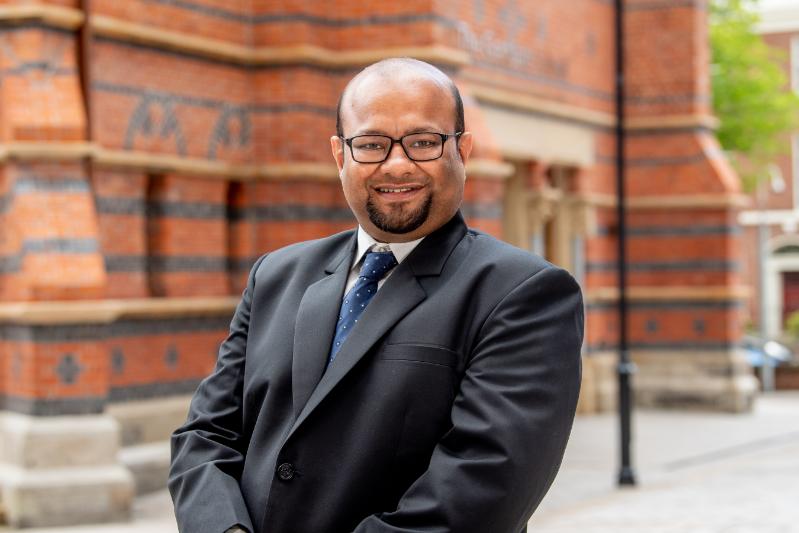
Nationality: Indian
Project Title: High-Performance Distributed Graph Analytics
School: Electronics, Electrical Engineering and Computer Science
QUB Supervisor: Professor Hans Vandierendonck & Dr Thai Son Mai
Tezpur Supervisor: Dr Arindam Karmakar
Graphs are ubiquitous in computer science. Several applications involving real-life data, like computer networks, connections in social media, road networks, and protein structures, among others, can be formulated as problems in graph theory. Graph analytics deals with analysing such data graphs. Applications of graph analytics include classification, clustering, pattern recognition, etc. The pattern recognition task comprises finding a subgraph isomorphism (SI) of a given pattern graph in a larger data graph.
SI as a means of pattern recognition has been widely used in a variety of applications. Some of these applications are malware detection, star identification, model matching in robot vision, RNA secondary structures comparison, protein homology analysis, matching chemical and biological structures, subcircuits identification, misuse and fraud detection, among others. It is, therefore, apparent that the SI problem has importance in a vast assortment of domains. Thus, any contribution towards reducing the run-time of a solution to the SI problem has the potential to benefit a large array of domains, as just exemplified.
In this project, our aim is to study, analyse and improve on the available solutions to the SI problem. First, we would analyse the effect of the characteristics of the pattern and data graphs on the run-time of the various heuristic solutions in an attempt to design a system that could predict which heuristic would give the fastest run-time for any given pattern and data graphs pair. Next, we would use a vector-based encoding of the nodes in the pattern and data graphs to propose a new heuristic, contrasting the available heuristics in the literature which use scalar criteria for decision making. Additionally, we would use parallelization as a central idea while exploring means of satisfying the previous two objectives, while mitigating the issues that arise out of parallelizing the said objectives.
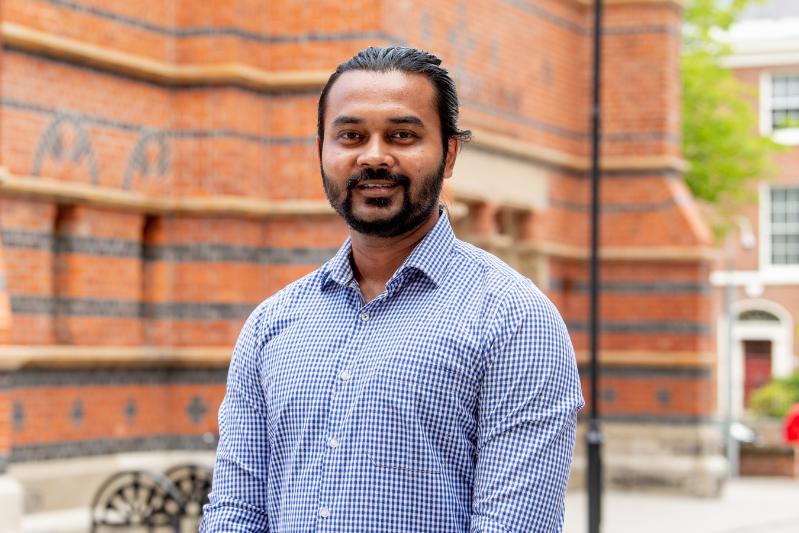
Nationality: Indian
Project Title: Verification of online health-related content
School: Electronics, Electrical Engineering and Computer Science
QUB Supervisor: Dr Anna Jurek-Loughrey & Dr Deepak Padmanabhan
Tezpur Supervisor: Dr Utpal Sharma
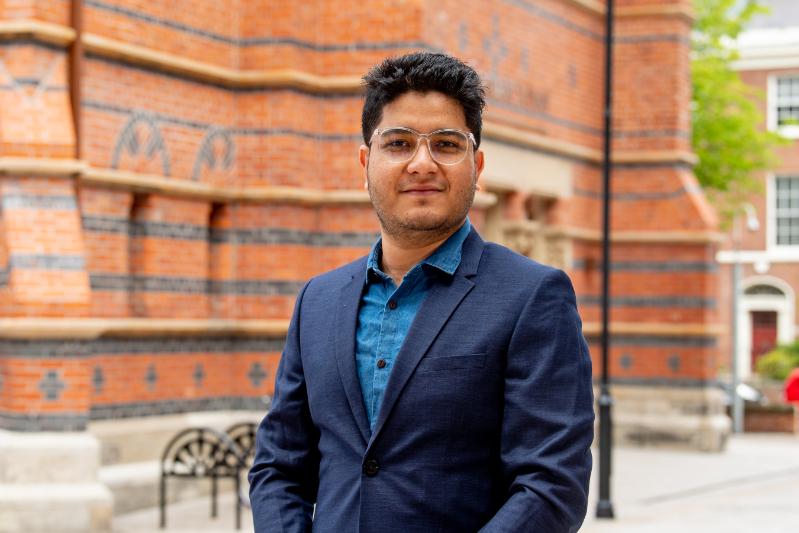
Nationality: Indian
Project Title: Evaluation of Utilisation of Biofuel for Electricity
School: Chemistry and Chemical Engineering
QUB Supervisor: Professor David Rooney
Tezpur Supervisor: Professor Debendra C. Baruah
Project overview
In achieving Indian commitment to reducing CO2emission, and to diversifying energy resources, methanol or dimethyl ether biofuel can be used for power generation particularly in rural and remote areas in replacement of diesel fuel. CO2emission in the India’s electricity generation sector is very high. The electricity sector in India exerts tremendous effort to improve the fuel utilization efficiency through modern combined-cycle power plants.
The project involves in the following key activates:
a) Techno-economic analysis review on methanol fuel utilization for electricity generation and related technologies including.
b) Evaluation of replacing the diesel fuel with methanol/DME fuel in the diesel generators.
c) Economic analysis of replacing the diesel fuel with methanol for power generation in rural areas and remote locations in India.
Biofuel production (methanol, DME or DMC) is a key enabling technology to increase energy independence and decrease environmental damage from the combustion of fossil fuels. This project will be beneficial by providing a new source of clean and renewable energy and reduce two sources of environmental damage- air pollution and aluminium process waste. This contribution to an efficient modern, distributed energy supply in India can have a significant impact on economic development and small-scale enterprise, educational opportunities, infant mortality, gender equality and quality of life.
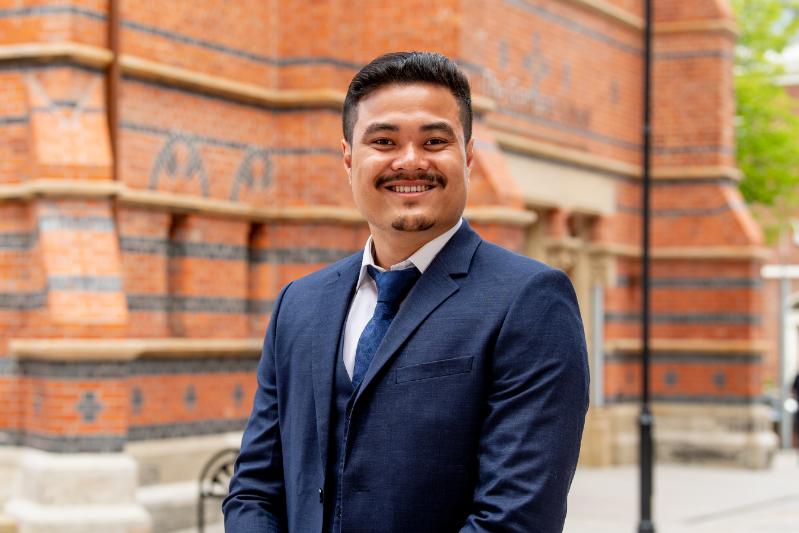
Nationality: Indian
Project Title: Smart & Multifunctional Polymer Nanocomposites for Energy Conversion & Storage
School: Mechanical and Aeronautical Engineering
QUB Supervisor: Professor Biqiong Chen
Tezpur Supervisor: Professor Niranjan Karak
Outline description, including interdisciplinary, intersectoral and international dimensions:
Polymer nanocomposites have attracted substantial interests from both the academia and industry over the last two decades and can be used in a wide variety of applications. Meanwhile, there is an urgent need for sustainable and smart materials which help enable the development of next-generation smart products whilst also tackling the challenges associated with the limited natural resources such as petroleum.
This joint PhD project aims to create novel sustainable smart polymer nanocomposites for multifaceted applications including self-cleaning coating, antibacterial biomaterials and wearable medical devices. The smart polymers and functional nanoparticles will be synthesized from sustainable resources and characterized using a range of techniques. Depending on potential applications, various properties of the novel nanocomposites, together with their polymer matrices, will be tested, and their structure-property relationships will be established.
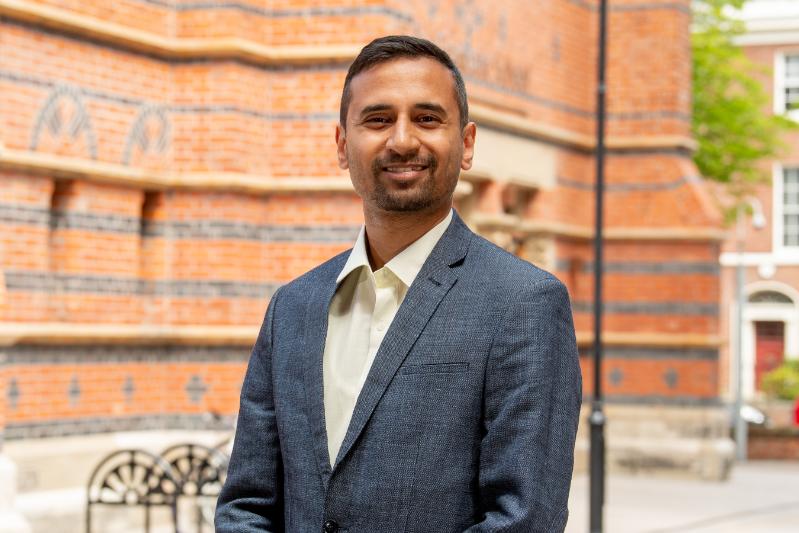
Nationality: Indian
Project Title: Investigation of the effect of mix composition on the Rheological properties, Mechanical performance, Durability and Structural behaviour of 3D Printing Concrete.
School: Natural and Built Environment
QUB Supervisor: Professor Mohammed Sonebi
Tezpur Supervisor: Professor Utpal Kumar Das
Research Showcase
Additive manufacturing, also known as 3D printing, is becoming a new trend in construction. Many disciplines have perceived this technology as the advent of the third industrial revolution. It is in manufacturing, development, and architecture that 3D printing will have the greatest impact on construction industry. Unlike the traditional method of construction which have low productivity and stunted technological capabilities; 3D printing concrete provides low cost, fast construction with automation and greater freedom of design and architecture. This construction technique is mainly beneficial as there is no need for the formwork. Because of the estimated cost of the formwork is between 35 to 60% of the overall cost of construction. Therefore, 3D printing represents a significant financial solution and improves the safety. Moreover, this innovation improves construction times and frees up architectural gesture by offering a wider possibility of shapes. Designers and architects can now print 3D buildings from materials such as mortar or concrete.
The aim of this project is to optimise the effect of mix composition of 3D printing made with local natural fibres and shape modifying agents on the fresh and rheological properties, the buildability, the mechanical performance, durability, and structural behaviour of prototype samples made with 3D printing concrete.
I have recently published a book chapter and a conference proceeding (please find the links below). I have submitted another paper at a conference (DC2022) whose review is going on.
Influence of nanoclay on the fresh and rheological behaviour of 3D printing mortar (https://doi.org/10.1016/j.matpr.2022.01.108)
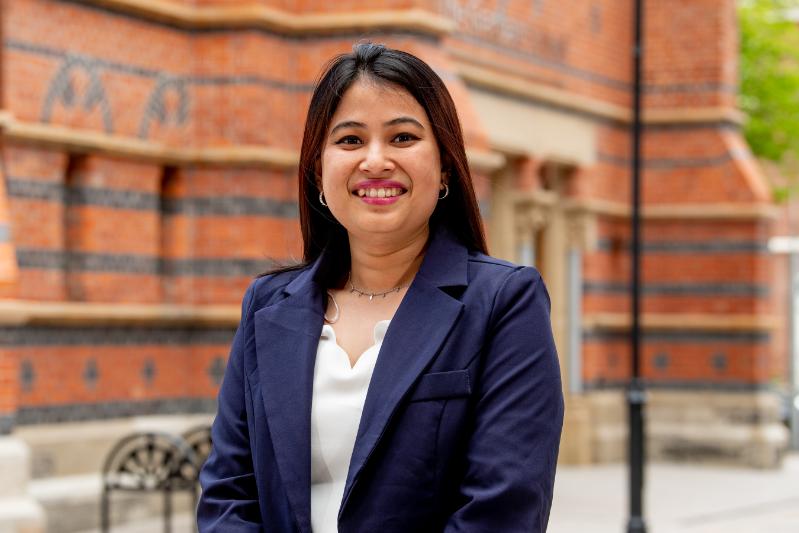
Nationality: Indian
Project Title: Development of a DNA vaccine for ovarian cancer
School: Pharmacy
QUB Supervisor: Professor Helen McCarthy
Tezpur Supervisor: Dr Raj Kumar Duary
Research Showcase:
Ovarian cancer is a very broad term used to describe the disease associated with the uncontrolled growth of cells in the two bilateral ovaries in women. High grade serous carcinoma (HGSC) is one of the most lethal ovarian cancers that is characterised by asymptomatic tumour growth, insufficient knowledge of malignant cell origin and sub-optimal detection. Conventional treatments such as chemotherapy and surgery depend upon the stage of the disease and have resulted in higher rates of relapse. Hence, there is a need for alternative treatments. Differential antigen expression levels have been utilised for early detection of the cancer and could be employed in vaccination strategies using nucleic acids. To overcome ineffective naked delivery of the nucleic acid cargo, a suitable cationic delivery system is required to deliver the cargo to its site.
This study aims to select a suitable target antigen specific to HGSC , formulation and characterisation of antigen encoding plasmid nanoparticles encapsulated with a cationic peptide delivery system to develop a prophylactic/therapeutic DNA vaccine.
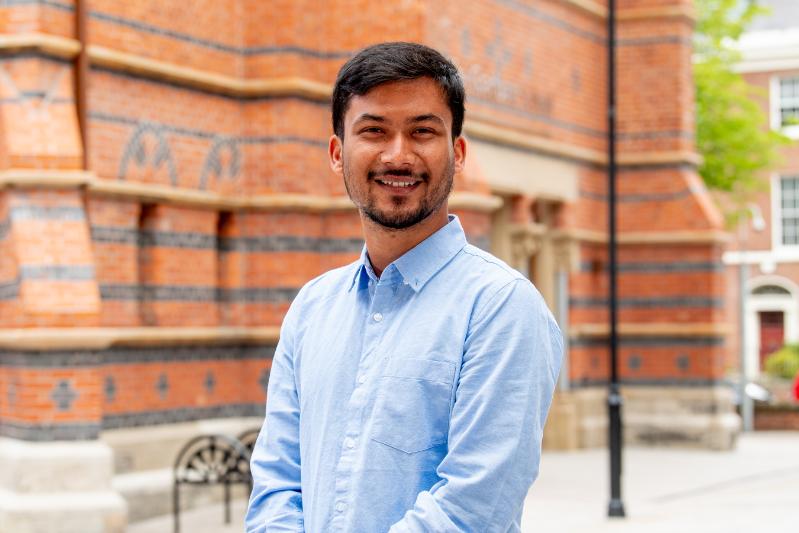
Nationality: Indian
Project Title: Ion Acceleration and Related Phenomena in Laser-Plasma Interaction
School: Mathematics and Physics
QUB Supervisor: Professor Marco Borghesi
Tezpur Supervisor: Professor Nilakshi Das
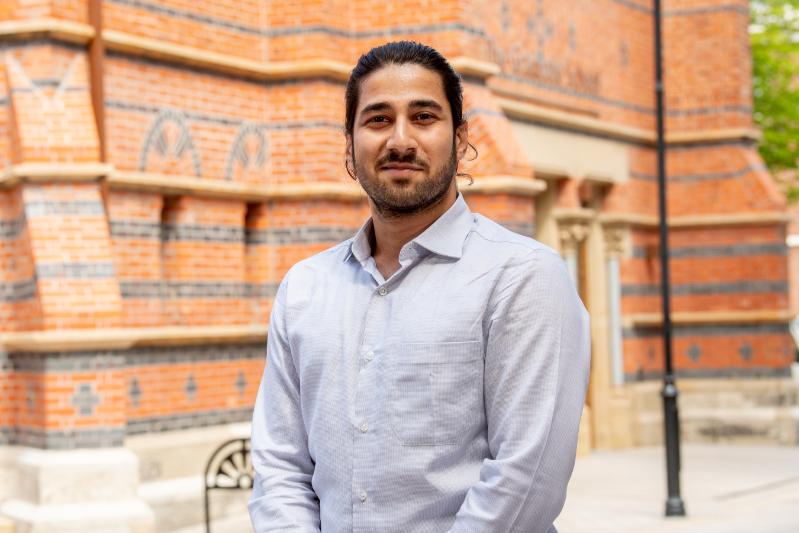
Nationality: Indian
Project Title: Super-Resolution in Millimeter-wave Compressive Computational Imaging
School: Electronics, Electrical Engineering and Computer Science
QUB Supervisor: Dr Okan Yurduseven & Professor Vincent Fusco
Tezpur Supervisor: Professor Bhabesh Deka
Research Showcase
Millimeter-waves (mmW) can penetrate through materials that are opaque at optical wavelengths, yet they are non-ionising and thus harmless to living tissue at low power levels. Hence, mmW imaging is of considerable interest for security screening, remote sensing, biomedical imaging and many other applications. Imaging at mmW frequencies exhibits a fundamental resolution limit determined by the finite size aperture of the imaging system, known as the diffraction limited resolution. For medical applications where high spatial resolution is required, several techniques can be adopted, including increasing the frequency band of operation, increasing the aperture size and reducing the imaging distance. Despite improving the resolution, these techniques bring certain challenges, such as increased hardware complexity, increased overall size of the aperture, large datasets for processing and reduced operating range for applications requiring large distances, such as standoff detection. An alternative solution to these challenges is super-resolution that can be achieved on the signal processing layer using techniques such as DCT/wavelet transform and machine learning. This project investigates super-resolution techniques in mmW compressive computational imaging. Improved resolution of the imaging system will be the key to achieving the identification of objects from low-resolution reconstructions. Processing of the mmW reconstructed images is performed using parallel-computing tools, facilitating super-resolution in real time.
Work carried out to date on this research project have been published in the following journals/conferences:
- Sharma, R., Yurduseven, O., Deka, B., & Fusco, V. (2021). Hardware Enabled Acceleration of Near-Field Coded Aperture Radar Physical Model for Millimetre-Wave Computational Imaging. Progress in Electromagnetic Research B, 90, 91-108. http://www.jpier.org/PIERB/pier.php?paper=20112305.
- Sharma, R., Hoang, T. V., Deka, B., Fusco, V., & Yurduseven, O. (2021). Towards a convolutional neural network coupled millimetre-wave coded aperture image classifier system. In SPIE April 2021 Passive and Active Millimeter-Wave Imaging XXIV: Proceedings (Vol. 11745). [117450C] (Proceedings of SPIE).. https://doi.org/10.1117/12.2587470.
- Hoang, T. V., Sharma, R., Fusco, V., & Yurduseven, O. (2021). Single-pixel compressive direction of arrival estimation using programmable metasurface apertures. In Passive and Active Millimeter-Wave Imaging XXIV: Proceedings [11745-9] (Proceedings of SPIE; Vol. 11745). SPIE. https://www.spiedigitallibrary.org/conference-proceedings-of-spie/11745/117450B/Single-pixel-compressive-direction-of-arrival-estimation-using-programmable-metasurface/10.1117/12.2587463.short?SSO=1.
- Sharma, R., Hussung, R., Keil, A., Friederich, F., Fromenteze, T., Khalily, M., Deka, B., Fusco, V., & Yurduseven, O. (2021). Coded-Aperture Computational Millimeter-wave Image Classifier using Convolutional Neural Network. IEEE Access, 9, 119830 - 119844. https://doi.org/10.1109/ACCESS.2021.3107782.
For any questions relating to the Tezpur Programme, please contact, Project Manager Lynne Spence on pgrsc@qub.ac.uk or 00 (44) 28 9097 3356.